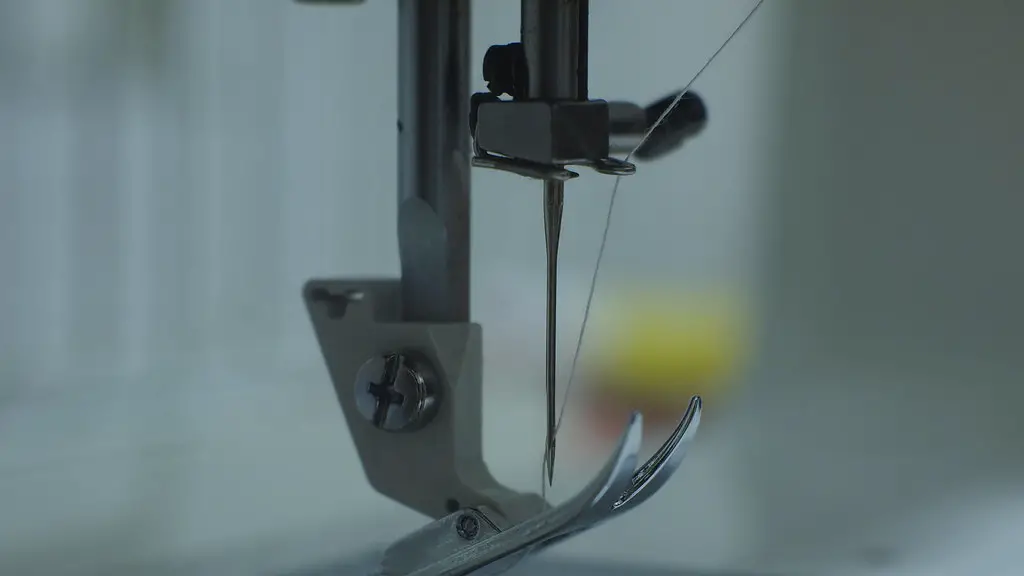Required Materials
Making a tutu with a sewing machine requires a few essential items: a piece of lightweight fabric, scissors, a measuring tape, a needle designed for sewing stretch fabric, matching thread and a ruler. A tailoring chalk is also suggested.
Firstly, determine the desired skirt length. Measure the length of the person wearing the tutu – from their waist to the desired length. Then, purchase enough fabric to cover the required length and cut cloth so that the ends are even and smooth. It is also possible to use an existing skirt as the base for a tutu, folding it onto the sewing machine and attaching the tulle layers to it.
Next, it is important to evenly gather the fabric. This can be done with a basting stitch. Alternatively, elastic can be used for gathering the skirt’s fabric. After gathering the skirt, place the fabric on the sewing machine and stitch the seams through the layers. Lastly, start adding the tulle layers.
Adding Tulle Layers
To begin with, cut strips of tulle. Tulle should be of different lengths as this will create texture and interest in the tutu design. For a full tutu with a fluffy effect, cut two strips of tulle in two widths- one with a width of 4-6 inches, the other with a width of 7-10 inches.
Next, tuck each tulle piece in the seam using the needle – tucking them in the same places. As the tulle strips are sewn in, the tutu will start to take shape. Once completed, the design can be enhanced with a ribbon or string bow.
For a tulle tutu finished already, leave the ends- of both the tulle layers and the skirt- of the same length for a cleaner look. If running stitching is used to secure the skirt and tulle strips, the thread can be tied off and instead of cutting it, thread it back into and through a loop of the fabric, thus hiding the ends and securing it.
Adding Elastic and Adjustments
At this stage, the tutu can be adjusted if necessary. Measure around the waist to determine the correct elastic size and then measure the elastic against the tutu’s waist before cutting. Start by stitching the elastic to itself in a circle then join the top using a straight stitch. The elastic should be positioned on the underside of the tutu and the stitching should be done with right sides of the fabric facing.
Make sure to leave a little slack while stitching. This way, the tutu will move better with the person wearing it. Once the Elastic is secured, cut a piece of fabric twice the width of the tutu’s waist and fold it lengthways. Pin and stitch it along the joined elastic and the waist of the tutu – this will ensure a neat finish.
All that is left is to finish sewing the tutu. A neat finish can be done with a serging technique or a twin needle stitching. This involves running a straight stitch with two lines of thread which gives a clean and professional finish.
Decorative Finishes
There are various ways of decorating the tutu. A bow or various layered ribbons along the waist of the skirt will give an interesting contrast. A hand-sewn flower can be attached to the centre of the bow, or lace can be used to provide a timeless look. Buttons along the elastic also work very well.
To draw attention to the tutu, matching accessories can be added. Gloves, shoes and a tiara are ideal accessories to bring the design of the tutu together. Additionally, beads, sequins, rosettes and other embroidered details can be attached for a romance-tinged look.
Cleaning and Storage
To ensure the life of a tutu, cleaning and storing it are very important. It is advisable to hand-wash tutus to keep them as new and fresh as possible. Tutus should not be hung on a hanger as this can cause the fabric to stretch and damage the elastic. Instead, they should be folded in tissue and placed in a shoe box to keep it shape.
Maintenance & Repairs
This too plays an important role in making sure the tutu remains in good condition for long-term wear. It is suggested to reinforce weak areas such as the seams or corners where the tulle is attached with a double stitch or extra tulle layers. Ultimately, checking for any tears or loose threads can nip any potential problems in the bud.
Conclusion
Making a tutu with a sewing machine is not as difficult as it may seem. With the right supplies and techniques, anyone can make a personalized, beautiful tutu!



